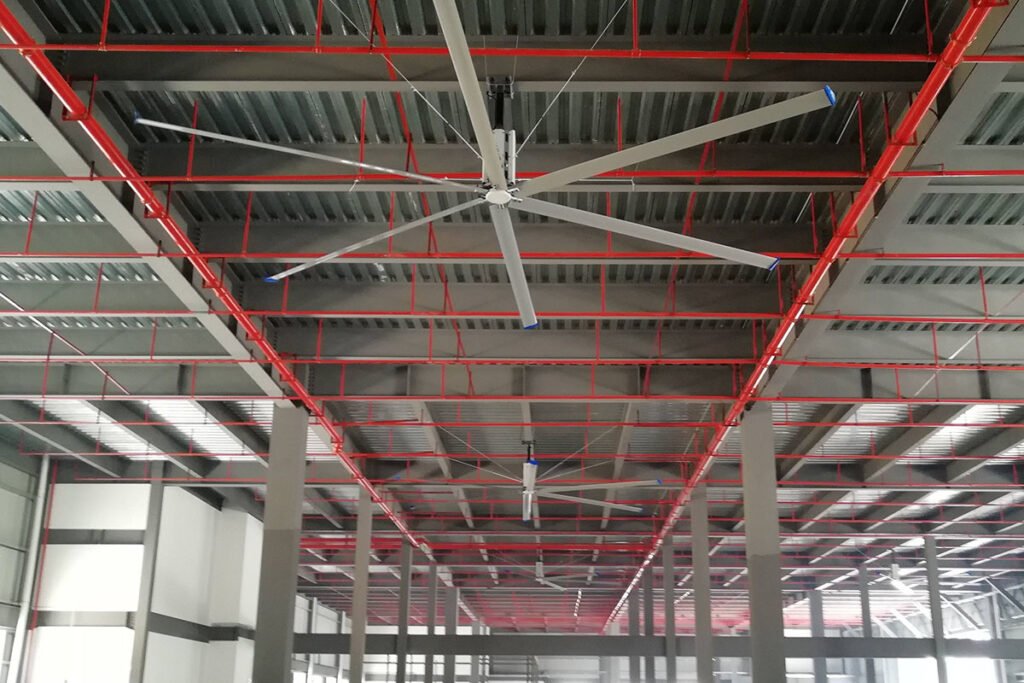
The installation spacing of HVLS (High Volume, Low Speed) industrial fans is a critical factor that affects their efficiency and the overall effectiveness of the ventilation system in a large space. The spacing is determined by several considerations, including the size of the fan, the volume of air it moves, the layout of the space, and the specific requirements for air circulation and cooling.
Key Factors for Determining Spacing
- Fan Coverage: The coverage area of an HVLS fan is directly related to its diameter. Larger fans can cover more ground with a single unit, which means they can be spaced further apart. For instance, a 7-meter fan might cover an area of 1200-1500 square meters, as mentioned by Air21xx, which would influence how far apart the fans should be installed.
- Airflow Requirements: The desired airflow and the specific cooling needs of the space will also dictate the spacing. If the area is particularly hot or if there are heat-generating processes, fans may need to be placed closer together to ensure adequate airflow.
- Space Layout: The layout of the factory or warehouse, including any obstructions, machinery, or structural elements, will affect the placement of HVLS fans. Clear spaces may allow for wider spacing, while areas with many obstacles may require more fans or adjusted positioning to ensure proper air circulation.
- Energy Efficiency: To maximize energy efficiency, fans should be spaced to provide optimal cooling without overworking the system. This balance ensures that energy is used effectively to maintain a comfortable environment.
- Safety and Comfort: The spacing should also take into account the comfort and safety of workers. Fans should be positioned to avoid direct downdrafts that could cause discomfort or safety issues, such as blowing away lightweight objects.
General Guidelines
- Standard Spacing: As a general rule, HVLS fans can be spaced according to the diameter of the fan. For example, a fan with a 7-meter diameter might be spaced about 7 to 10 times its diameter apart (e.g., 49 to 70 meters) in open areas with no significant heat sources or airflow obstructions.
- Adjustments for Specific Conditions: If the space has high heat loads or poor natural ventilation, fans may need to be closer together, perhaps 5 to 7 times the fan diameter.
- Manufacturer Recommendations: It’s essential to consult the manufacturer’s guidelines for specific fan models, as they will provide detailed recommendations based on the fan’s performance and design.
- Professional Assessment: For the most accurate spacing, it’s often best to consult with an HVAC professional or engineer who can assess the specific needs of the space and provide a tailored layout plan.
